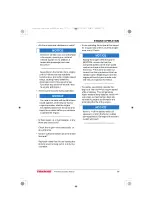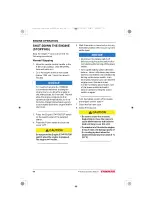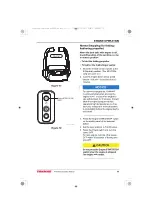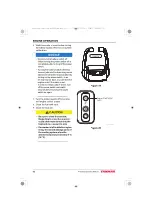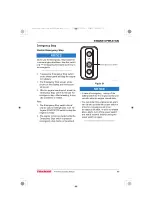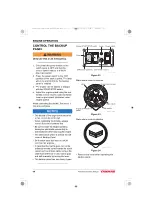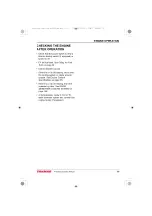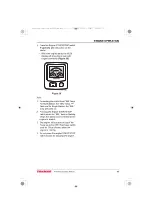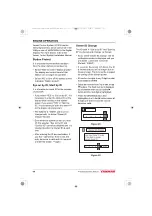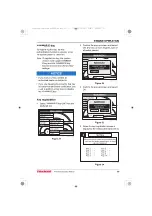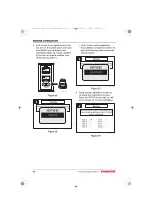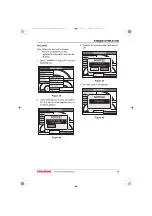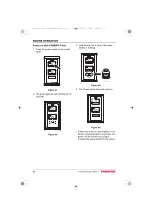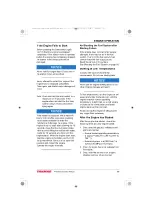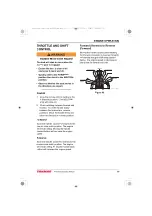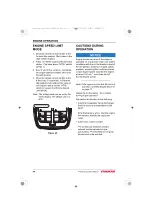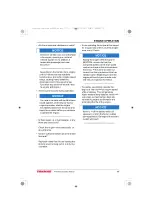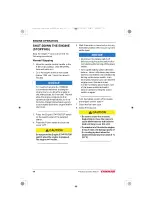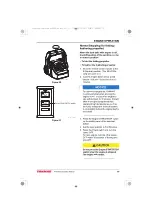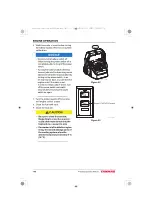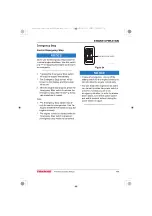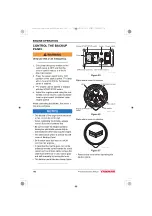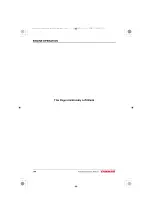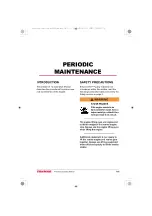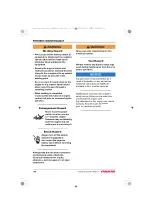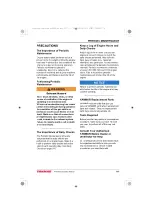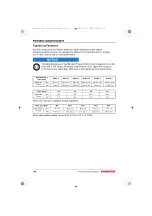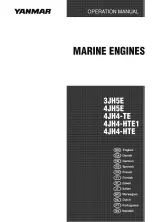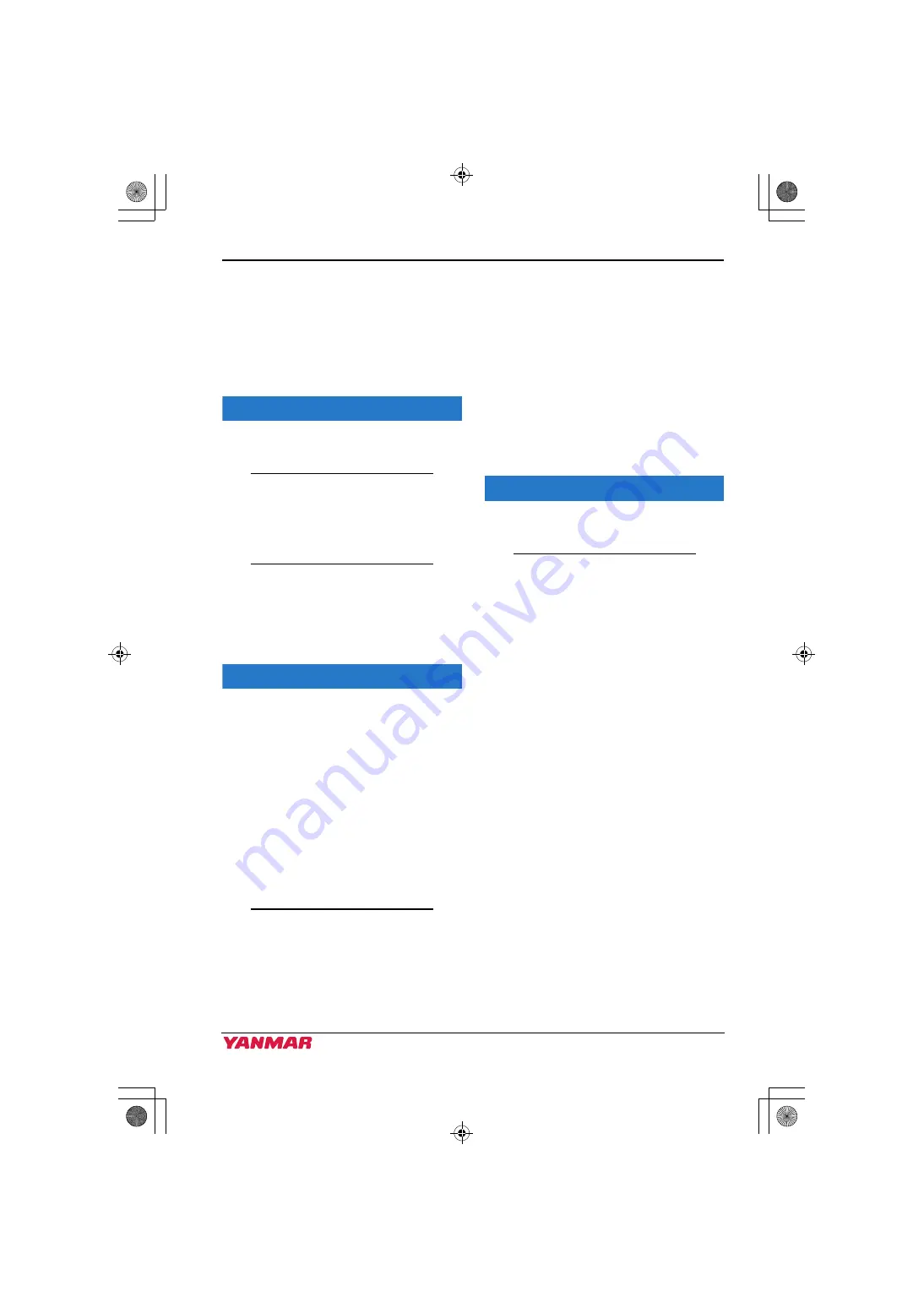
ENGINE OPERATION
JH Series Operation Manual
93
If the Engine Fails to Start
Before pressing the Start switch again,
confirm that the engine has stopped
completely. If the starter motor is operated
before the engine has completely stopped,
the starter motor pinion gear will be
damaged.
NOTICE
Never hold for longer than 15 seconds or
the starter motor will overheat.
Never attempt to restart the engine if the
engine has not stopped completely.
Pinion gear and starter motor damage will
occur.
Note: Push and hold the start switch for a
maximum of 15 seconds. If the
engine does not start the first time,
wait for about 15 seconds before
trying again.
NOTICE
If the vessel is equipped with a water lift
(water lock) muffler, excessive cranking
could cause seawater to enter the
cylinders and damage the engine. If the
engine does not start after cranking for 15
seconds, close the thru-hull water intake
valve to avoid filling the muffler with water.
Crank for 10 seconds at a time until the
engine starts. When the engine does start,
stop the engine immediately and turn off
the power switch. Be sure to re-open the
seacock and restart the engine.
Operate the engine normally.
Air Bleeding the Fuel System after
Starting Failure
If the engine does not start after several
attempts, there may be air in the fuel
system. If air is in the fuel system, fuel
cannot reach the fuel supply pump.
Bleed the air out of the system.
See Bleeding the Fuel System on page 50
.
Starting at Low Temperatures
Comply with local environmental
requirements. Do not use starting aids.
NOTICE
Never use an engine starting aid such as
ether. Engine damage will result.
To limit white smoke, run the engine at low
speed and under moderate load until the
engine reaches normal operating
temperature. A light load on a cold engine
provides better combustion and faster
engine warm-up than no load.
Avoid running the engine at idling speed
any longer than necessary.
After the Engine has Started
After the engine has started, check the
following items at a low engine speed:
1. Check that the gauges, indicators and
alarm are normal.
• Normal coolant operating temperature
is approximately 76° to 90 °C (169° to
194 °F).
• Normal oil pressure at 3000 min
-1
is
0.28 to 0.54 MPa (41 to 78 psi).
2. Check for water, fuel or oil leakage from
the engine.
3. Check that the smoke color, engine
vibration and sound are normal.
3JH40_4JH45_4JH57_4JH80_4JH110_EN_OPM.book 93 ページ 2022年9月22日 木曜日 午後6時17分

